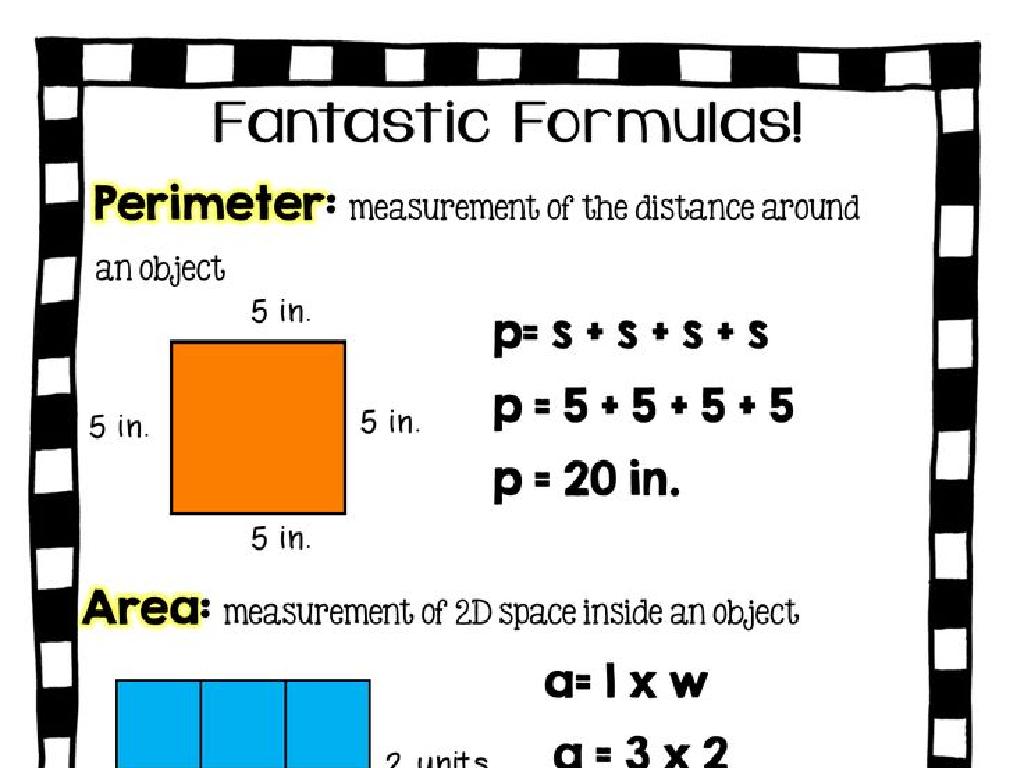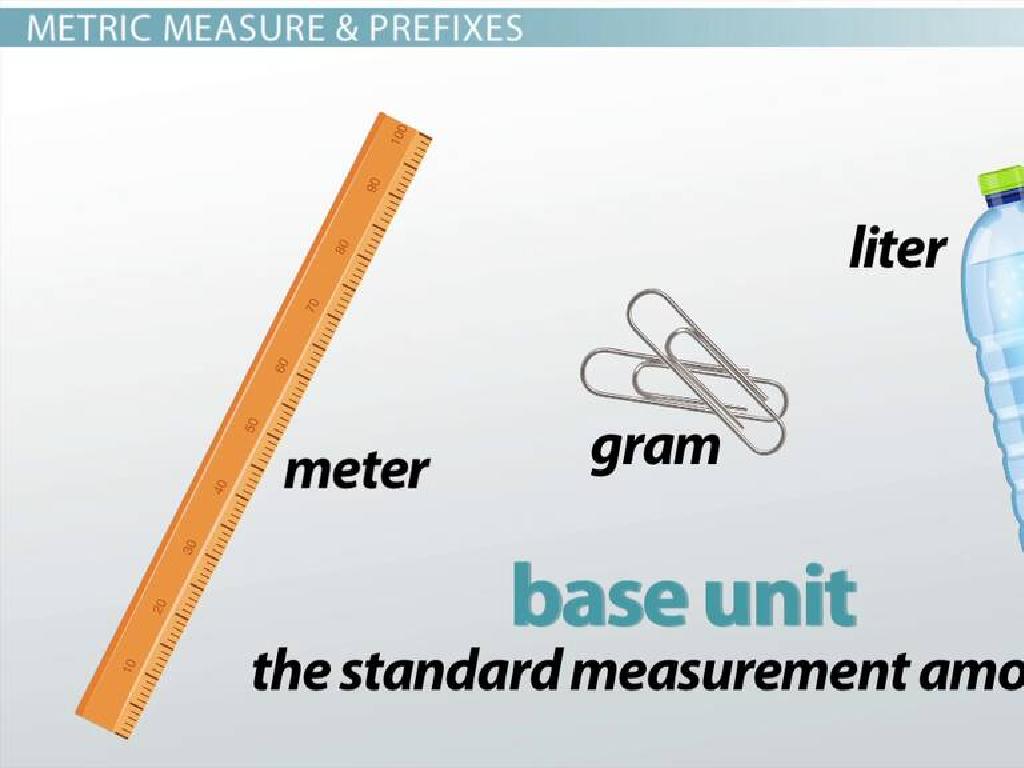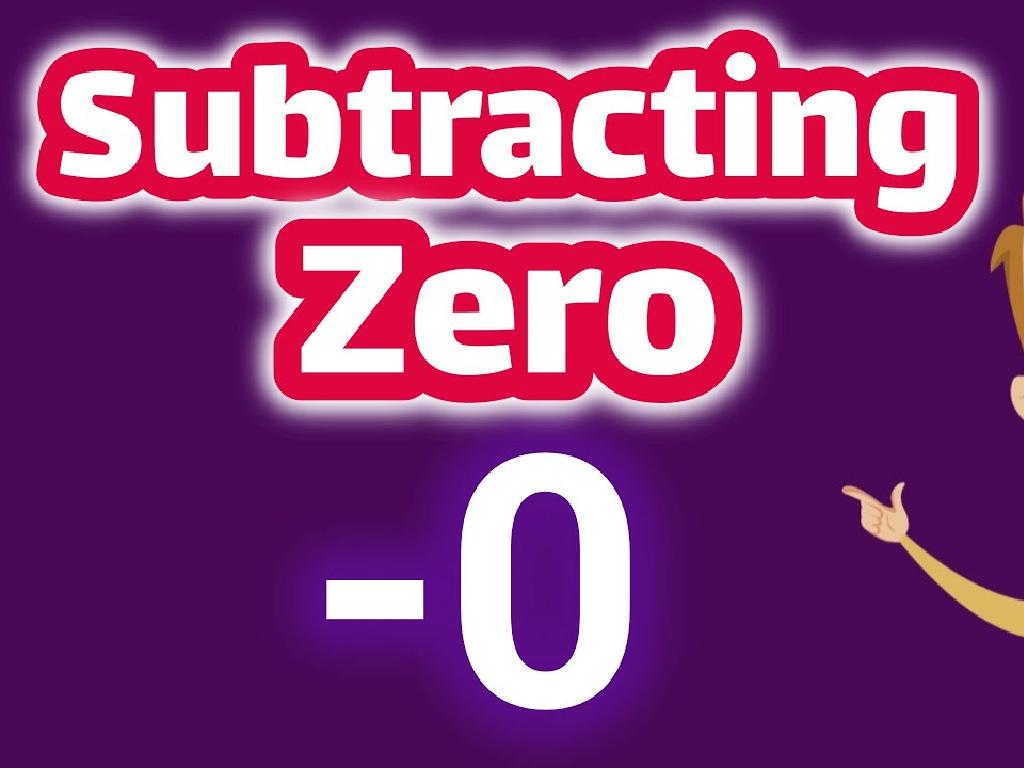Solve Percent Problems Using Strip Models
Subject: Math
Grade: Seventh grade
Topic: Percents
Please LOG IN to download the presentation. Access is available to registered users only.
View More Content
Welcome to Percents!
– Percents: A Basic Introduction
– A percent represents a part out of 100, like 50% is 50 out of 100.
– Relating Percents to Fractions and Decimals
– Every percent has a fraction and decimal equivalent, e.g., 50% = 1/2 = 0.5.
– Applying Percents in Real Life
– Use percents for discounts, interest rates, and statistics.
– Visualizing with Strip Models
– Strip models show percents visually, aiding in problem-solving.
|
This slide introduces students to the concept of percents and their importance in both mathematics and everyday life. Begin by explaining that ‘percent’ means ‘per hundred’ and is a way to express fractions and decimals in a standardized form. Illustrate how to convert between percents, fractions, and decimals with examples. Discuss practical applications of percents, such as calculating discounts during shopping, understanding interest rates in banking, or interpreting statistical data. Introduce strip models as a visual tool to help solve percent problems by representing the whole as a strip divided into equal parts. Encourage students to think of percents as part of their daily decision-making process.
Understanding Percents: Strip Models
– Define percent: ‘per hundred’
– Percent means parts per hundred, e.g., 25% = 25/100
– Percent’s role in daily life
– Used in discounts, statistics, and more
– Convert fractions to percents
– To convert, divide the numerator by the denominator and multiply by 100
– Convert decimals to percents
– Multiply the decimal by 100 to get the percent
|
This slide introduces the concept of percent to students, emphasizing its meaning as ‘per hundred’ and its prevalence in everyday situations such as shopping discounts, nutrition labels, and statistics. Students will learn to convert fractions to percents by dividing the top number of the fraction (numerator) by the bottom number (denominator) and then multiplying by 100. For decimals, they will practice multiplying by 100 to find the percent. Visual aids like strip models can be used to represent these conversions graphically, helping students to better understand and visualize the relationships between fractions, decimals, and percents.
Understanding Percents with Strip Models
– Visualize percents using strips
– A strip model uses a bar divided into equal parts to show percents.
– Divide strips for percentage representation
– If a strip has 100 parts, each part represents 1%.
– Compare strips and pie charts
– Pie charts show parts of a whole, like strip models, but in a circle.
– Practice with strip models
– Use strip models to solve real-world percent problems.
|
This slide introduces students to the concept of using strip models to visualize and solve percent problems. Strip models are a great way to make abstract concepts like percentages more concrete. By dividing a strip into equal parts, students can easily see what a certain percentage of a whole looks like. Comparing strip models to pie charts can help students understand different representations of the same data. Encourage students to practice by creating their own strip models and using them to solve problems involving discounts, tax, or population percentages. This visual approach will enhance their comprehension and ability to work with percents in various contexts.
Solving Percent Problems with Strip Models
– Identify Whole, Part, and Percent
– Whole is the total amount, part is the segment, percent is part per hundred
– Use Strip Models for Percents
– Visualize parts of a whole as strips to find percentages
– Example: Calculating Discounts
– Find discount by multiplying percent by the original price
– Example: Figuring Tax and Tips
– Calculate tax by applying tax percent to the price, tips are percent of service cost
|
This slide introduces students to the concept of solving percent problems using strip models, a visual tool that helps in understanding the relationship between the whole, part, and percent. Start by defining what constitutes the whole, the part, and the percent in a given problem. Then, demonstrate how to use strip models to represent the whole as a complete strip and the percent as a portion of that strip. Provide concrete examples such as calculating discounts on items, determining the amount of sales tax to be added, and figuring out how much to tip at a restaurant. These real-world applications will help students grasp the concept of percentages in a practical context. Encourage students to draw their own strip models and calculate the percentages for practice.
Hands-On Practice: Percent Problems with Strip Models
– Solve: What is 25% of 80?
– Use a strip model to divide 80 into 4 equal parts; 1 part is 25%.
– Solve: 15% of a number is 45, find the number
– If 15% is 45, divide 45 by 15% to find 100%.
– Group Activity: Create Strip Models
– In groups, design strip models for given percent problems.
|
This slide is for hands-on practice with percent problems using strip models. For the first problem, guide students to represent 80 as a whole strip and divide it into four equal parts, with each part representing 25%. For the second problem, instruct students to set up a proportion or use the strip model to find the whole when a part and its percentage are known. The group activity encourages collaboration and application of concepts learned. Provide different percent problems for each group and have them create and solve these problems using strip models. This will help solidify their understanding of percentages and strip models as visual aids.
Class Activity: Percent Scavenger Hunt
– Find classroom items with percentages
– Use strip models for calculation
– Draw a strip model to represent the percentage visually
– Verify the percentage accuracy
– Check if your strip model’s result matches the item’s labeled percentage
– Present findings to the class
|
This interactive activity is designed to help students apply their knowledge of percentages in a real-world context. Students will search for items around the classroom that have percentages on them, such as charts, graphs, or labels. They will then use strip models to calculate the percentage represented. This could involve dividing a strip into 100 equal parts and shading the corresponding number of parts. After calculating, students should verify that their strip model’s result aligns with the labeled percentage on the item. Once they have completed their scavenger hunt, students will prepare a short presentation to share their findings with the class, explaining how they used the strip model to determine the percentage. This will reinforce their understanding and provide practice in explaining mathematical concepts. Possible variations of the activity could include comparing discounts on items, calculating the percentage of a certain color in a mixed bag of candies, or determining the percentage of students who prefer a certain book genre.
Wrapping Up: Percents and Strip Models
– Recap: Percent Problems with Models
– Review how strip models visualize percent problems.
– Real-life relevance of percents
– Understanding percents is crucial for financial literacy and discounts.
– Homework: Worksheet on Percents
– Solve provided problems using strip models to reinforce today’s lesson.
– Prepare for next class discussion
– Be ready to discuss the worksheet solutions.
|
As we conclude today’s lesson, it’s important to review the key concepts of solving percent problems using strip models. Emphasize the practical applications of percents in everyday life, such as calculating sales tax, discounts, and interest rates. For homework, students are assigned a worksheet that includes a variety of percent problems requiring the use of strip models. This will help solidify their understanding of the topic. In the next class, we will discuss the solutions to the worksheet, so students should come prepared to share their answers and methods. Encourage students to reach out if they have questions while completing the homework.






